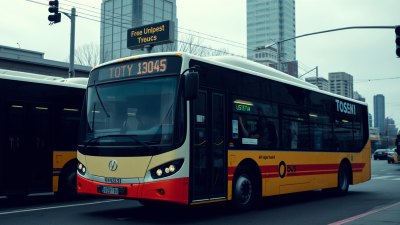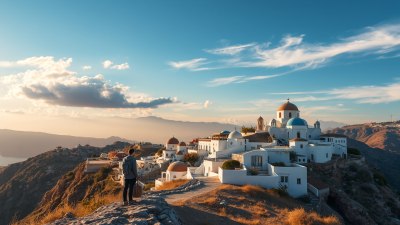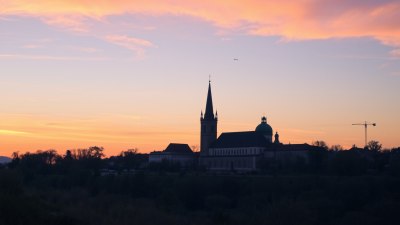Sagrada Familia in Spain Isn’t Finished and Maybe Never Should Be
Explore the unfinished masterpiece of Sagrada Familia in Spain and the debate on its completion.

The Sagrada Familia, a monumental basilica located in Barcelona, Spain, stands as one of the most remarkable architectural achievements of the modern age. Designed by the renowned architect Antoni Gaudí, this iconic structure has been under construction since 1882, and it is still not completed to this day. The ongoing work has led to an intriguing conversation regarding its potential completion and whether it should ever be finalized.
Gaudí's vision for the Sagrada Familia was colossal and intricate, blending a multitude of architectural styles such as Gothic and Art Nouveau. His original plans encompassed 18 towers, symbolizing various religious figures, along with a detailed façade that tells the story of the life of Jesus Christ. While much progress has been made over the years, particularly in recent decades, the question of whether the church should remain a work in progress invites a poignant discourse.
A Brief History of Sagrada Familia
The foundation stone for the Sagrada Familia was laid in 1882, and Gaudí took charge of the project in 1883. At that time, the basilica was envisioned as a profound tribute to the life of Christ, infused with Gaudí's architectural genius. He worked on the project for 43 years until his untimely death in 1926, having completed only a fraction of his ambitious vision.
After Gaudí's death, various architects took over the project, attempting to interpret and continue his work based on his designs and models. The unique challenge lies in preserving Gaudí's original intention and style while integrating modern construction techniques. As a result, Sagrada Familia's construction has drawn both admiration and scrutiny. Critics argue that certain modern adaptations stray too far from Gaudí's original artistic vision.
The Architectural Marvel
Sagrada Familia is often celebrated for its compelling combination of natural forms, vibrant colors, and light manipulation. The basilica features distinct facades: the Nativity Façade, which showcases the birth of Jesus, and the Passion Façade, detailing the crucifixion. Each facade embodies a different emotional tone, evoking a variety of responses from those who behold them.
The interior of the basilica is no less stunning, characterized by its soaring columns that resemble trees, creating an immersive forest-like atmosphere. The use of stained glass fills the space with vibrant colors, enhancing the spiritual ambiance. Every design choice, from the layout to the ornamentation, serves a purpose, narrating the biblical tales that inspired the architecture.
The Debate on Completion
As with many significant works of art, the debate regarding the completion of the Sagrada Familia is heavily nuanced. Many argue that completing the basilica would honor Gaudí’s vision and serve as a fulfillment of a long-standing project that attracts millions of visitors each year. Proponents of completion believe that, once finished, the Sagrada Familia would be a strong symbol of devotion and perseverance.
Conversely, numerous detractors advocate for the idea of leaving the Sagrada Familia as an unfinished masterpiece. This perspective is grounded in the belief that the essence of the monument lies in its ongoing evolution, symbolizing the unending search for spiritual enlightenment and artistic expression. The concept of imperfection resonates deeply with many, drawing parallels to life's own unfinished narratives and the pursuit of perfection that can never truly be attained.
The Role of Gaudí’s Vision in Modern Context
As the world continues to evolve, so does the interpretation of Gaudí's architectural philosophy. The ongoing construction presents an opportunity to explore how the original artistic vision can adapt to contemporary values and technologies. Many architects and artists today reflect on the significance of blending old and new, respecting the past while innovating for the future.
Innovative technologies have significantly impacted the construction of the Sagrada Familia. Computer modeling and advanced machinery have accelerated the building process while attempting to honor Gaudí’s original designs. This intersection of tradition and innovation invites a discussion on the relevance and influence of historical architectural principles in modern society.
Cultural Significance
Beyond its striking aesthetics, the Sagrada Familia holds cultural and religious significance. It stands not only as a place of worship but also as a beacon of Catalan identity and pride. The basilica has become a symbol of resilience, showcasing the dedication of both the masters and the countless workers who have contributed to its existence over the decades.
The Sagrada Familia also poses an essential narrative about faith. Despite being a monument for many, it remains a living testament to the religious convictions that drove its creation. The spiritual implications of the structure emphasize a broader conversation about faith, devotion, and how such values can manifest in artistic forms.
Tourism and Economic Impact
Tourism plays an instrumental role in Barcelona’s economy, with the Sagrada Familia positioned as one of its prime attractions. The ongoing construction has heightened interest, drawing nearly 4.5 million visitors annually. The collaborative efforts of tourists, donors, and local supporters ensure the continuation of the project, instigating conversations about art, architecture, and community involvement.
However, the influx of tourists raises concerns about the ecological and social implications on the surrounding areas. The balance between preserving the neighborhood's integrity and accommodating millions of visitors presents an intricate challenge for stakeholders. Sustainable tourism and responsible management are crucial components as Barcelona continues to navigate its growth as a tourist destination.
The Future of Sagrada Familia
As plans move forward toward reaching a projected completion date of around 2026, the centenary of Gaudí’s death, discussions regarding the essence of the Sagrada Familia juxtapose the artistic vision against modern realities. The confluence of artistic heritage, spiritual significance, and contemporary societal views creates a rich tapestry of dialogue surrounding the basilica.
Ultimately, the Sagrada Familia invites us to reflect on the very nature of completion—what it means to finish something that has been an ongoing journey for so long; the unfinished nature of the basilica mirrors our own lives and experiences. The question remains whether the beauty of this artistic endeavor lies in its incompleteness, making it a remarkable beacon of both artistic aspiration and human endeavor.
Conclusion: The Art of Being Unfinished
In essence, the Sagrada Familia serves as a powerful reminder that art and architecture can embody the human experience—the struggles, the hopes, the faith, and the ongoing quest for meaning. Whether or not it is ever deemed 'finished,' the ongoing construction of the basilica shall continue to inspire generations, depicting an intimate relationship between creative vision and the relentless pursuit of artistic expression. The layers of history, culture, and spirituality captured within its walls render the Sagrada Familia a timeless artifact, forever anchored in the hearts of those who encounter its splendor and reverence.











